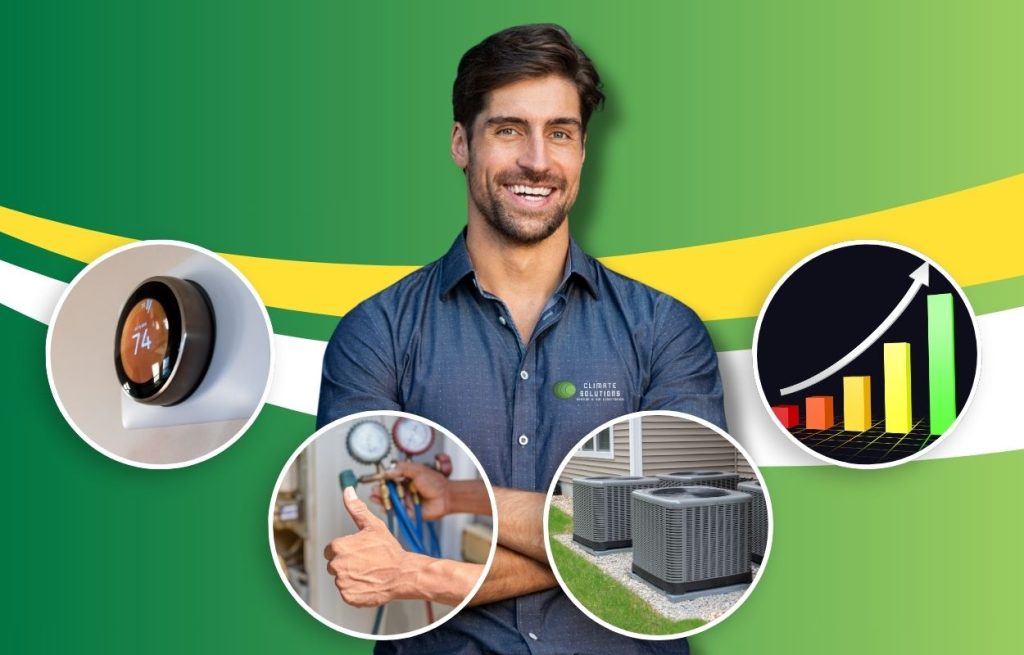The air conditioning industry has come a long way in recent years. Advancements in technology, environmental awareness, and consumer demand for energy-efficient solutions have all driven significant improvements in how AC systems are designed, installed, and operated. Today’s modern air conditioners are not only more effective at cooling homes, they also use less energy, reduce environmental impact, and offer smarter control than ever before.
If you’re still relying on a system that’s 10–15 years old, you might be surprised at how far the industry has progressed. Here’s a look at how AC systems have improved in efficiency recently, and how newer technologies like heat pumps, smart thermostats, and refrigerant updates are shaping the future of indoor comfort.

1. Higher SEER Ratings and Better Energy Efficiency
One of the most noticeable changes in AC system efficiency has come in the form of higher SEER ratings (Seasonal Energy Efficiency Ratio). Older air conditioners often had SEER ratings of 10 or 12, but today’s units commonly range from SEER2 14 up to SEER2 20+ or more in high-efficiency models.
These improvements are thanks to innovations such as:
- Variable-speed compressors that adjust output based on demand
- Improved coil designs that allow better heat transfer
- Enhanced fan motors that run more quietly and efficiently
The result is significant energy savings—modern ACs can reduce cooling costs by up to 30–50% compared to older models.
2. Smart Thermostats for Smarter Control
One of the most transformative changes in AC efficiency doesn’t come from the unit itself—but how it’s controlled. Smart thermostats, such as Nest, ecobee, and Honeywell models, have revolutionized how homeowners interact with their HVAC systems.
Smart thermostats improve efficiency by:
- Learning your schedule and adjusting temperatures automatically
- Allowing remote control via smartphone apps
- Providing energy reports and suggestions for optimization
- Integrating with other smart home devices
These features help reduce unnecessary cooling, prevent energy waste, and fine-tune comfort preferences, all of which contribute to lower utility bills and better performance.
3. Rise of Energy-Efficient Heat Pumps
Heat pumps have gained popularity in recent years as a high-efficiency, all-in-one solution for both heating and cooling. In cooling mode, heat pumps function just like a traditional AC unit but are often more energy-efficient—especially in moderate climates.
New inverter-driven heat pumps offer:
- Variable-speed operation for smoother temperature control
- Lower energy usage due to more precise cycling
- Compatibility with ducted and ductless systems
Because heat pumps can replace both your furnace and air conditioner, they’re a smart, efficient option for homeowners looking to consolidate their systems and cut energy costs.
4. Environmentally Safer and More Efficient Refrigerants: A2L Transition
A major shift is currently underway with the introduction of A2L refrigerants, such as R-32 and R-454B. These refrigerants are replacing older types like R-410A, which are being phased out due to their high global warming potential.
The new A2L refrigerants:
- Have lower environmental impact
- Operate at higher efficiency levels
- Require updated AC designs for optimized performance
While the transition requires updated safety protocols due to the mildly flammable nature of A2Ls, the efficiency and sustainability benefits are significant, making this a key advancement in modern AC systems.
The Future of Indoor Comfort Is Here
With so many improvements in energy efficiency, control, and environmental impact, there’s never been a better time to upgrade your AC system. Whether you’re looking for lower energy bills, better climate control, or a more eco-conscious solution, today’s air conditioners are delivering on all fronts.
Schedule an appointment for air conditioning services with the team at Climate Solutions, Inc. The trusted source for all your heating and cooling needs.

